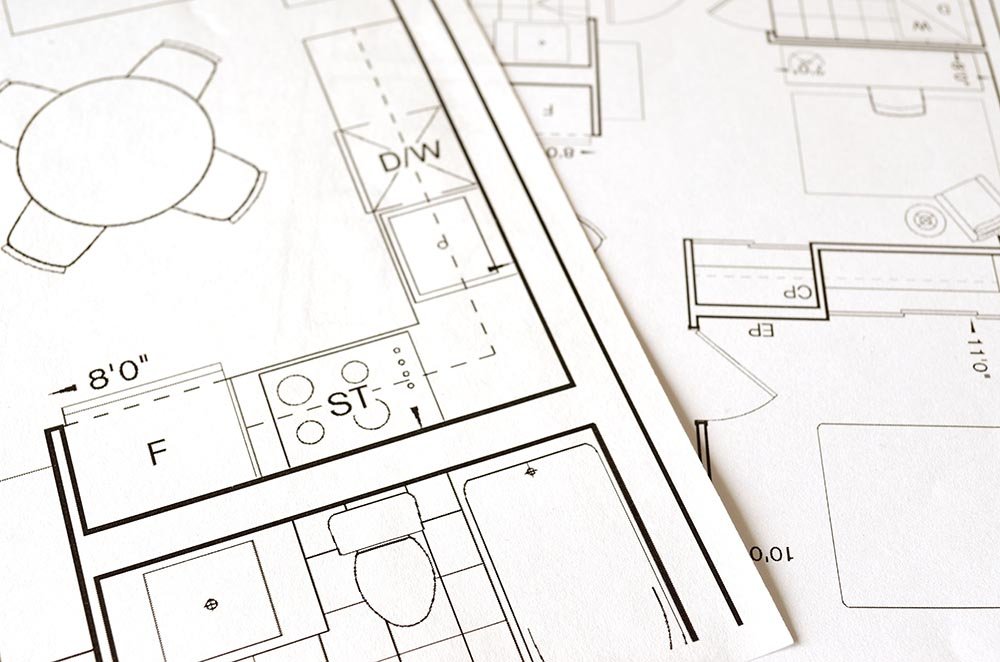Are you planning to build your dream home but worried about the skyrocketing costs of construction? Look no further! In this article, we will reveal the easy and effective money-saving strategies that will help you save big on your home construction without compromising on quality and style.
Building a home can be a significant financial investment, but with the right knowledge and approach, you can keep your budget in check and still achieve your dream living space. From smart material selection to smart negotiation tactics, we have got you covered. Learn how to navigate the construction process and make informed decisions that will not only save you money but also ensure that your home is built to the highest standards. So, if you are ready to embark on your home construction journey, read on to discover the insider tips and tricks that will help you save big and turn your dream home into a reality.
Planning Your Home Construction Budget
When it comes to saving money on your home construction, proper planning is key.
Before you start the construction process with local home builders JMB, take the time to create a detailed budget that includes all the costs associated with building your home. This will help you identify areas where you can cut costs and make informed decisions about where to allocate your budget.
One of the most important aspects of budget planning is to set realistic expectations. Research the average cost per square foot for construction in your area and use this as a starting point for estimating your overall budget. Keep in mind that unexpected expenses can arise during the construction process, so it’s always a good idea to have a contingency fund set aside.
Another way to save money on your home construction budget is to prioritize your needs versus your wants. Consider what features and finishes are essential for your lifestyle and focus your budget on those areas. By avoiding unnecessary upgrades and luxury items, you can significantly reduce your overall costs without sacrificing the functionality or aesthetics of your home.
Finding the Right Contractors and Suppliers
Finding reputable contractors and suppliers is crucial when it comes to saving money on your home construction. Start by doing a thorough research and gathering recommendations from friends, family, and neighbors who have recently built their homes. Look for contractors who have a proven track record of delivering high-quality work within a budget.
When evaluating contractors, don’t solely rely on their price quotes. Consider their experience, qualifications, and portfolio of completed projects. Request references and contact their previous clients to inquire about their overall satisfaction with the contractor’s work and adherence to budget constraints.
In addition to contractors, selecting the right suppliers can also have a significant impact on your construction costs. Look for suppliers from expanded metal companies who offer competitive prices without compromising on quality. Consider buying materials in bulk to take advantage of volume discounts. Building relationships with suppliers can also lead to future cost savings as they may offer preferential pricing for repeat customers.
Remember, it’s essential to get multiple quotes from different contractors and suppliers to ensure you’re getting the best value for your money. Don’t be afraid to negotiate and ask for discounts or price matching if you find a better offer elsewhere.
Cost-Saving Strategies for Materials and Finishes
The choice of materials and finishes can significantly impact the overall cost of your home construction. By being strategic in your selection, you can achieve significant savings without compromising on quality or style.
One cost-saving strategy is to opt for locally sourced materials. Imported materials often come with higher price tags due to transportation and importation fees. By choosing locally sourced materials, you not only support local businesses but also reduce your construction costs.
Additionally, consider using recycled or reclaimed materials. Not only are these materials more environmentally friendly, but they can also be significantly cheaper than brand-new alternatives. For example, reclaimed wood can be used for flooring, cabinetry, or accent walls, adding a unique touch to your home while saving money.
Another way to save on materials is to consider alternative options that offer similar aesthetics and durability. For example, instead of natural stone countertops, explore engineered stone or laminate options that mimic the look of real stone at a fraction of the cost.
When it comes to finishes, such as flooring and paint, consider opting for mid-range options instead of high-end luxury products. Many mid-range products offer similar quality and aesthetics but at a more affordable price point.
Buy From Wholesale Retailers
To further maximize your savings on materials, consider purchasing from wholesale retailers. Wholesale retailers often offer discounted prices on a wide range of construction materials, from lumber to plumbing fixtures.
Before making any large purchases, research local wholesale retailers and compare prices to ensure you’re getting the best deal. Keep in mind that some wholesale retailers may require you to have a contractor’s license or a minimum purchase amount, so be prepared to meet any requirements.
Buying from places like a hardwood and laminate flooring supplier not only saves you money upfront but can also help you stock up on materials for future projects or repairs. Just make sure you have adequate storage space to store the materials until they are needed.
Tips for Efficient Project Management and Timeline
Efficient project management is crucial for saving money on your home construction. Delays and miscommunication can result in increased labor costs and additional expenses. Here are some tips to help you manage your project efficiently and stick to your timeline.
Firstly, establish clear and open lines of communication with your contractor and suppliers. Regularly communicate your expectations, timelines, and any changes or concerns that may arise. This will help ensure that everyone is on the same page and can address any issues promptly.
Secondly, create a detailed construction schedule that outlines the sequence of tasks and deadlines. This will help you stay organized and track the progress of your project. Be realistic with your timeline and build in some buffer time for unexpected delays or issues that may arise.
Thirdly, consider using project management software or apps to streamline communication and track progress. These tools can help you stay organized, share documents and updates, and collaborate effectively with your contractor and suppliers.
Lastly, be proactive in managing the construction process. Regularly visit the construction site to monitor progress and address any concerns or questions. By being actively involved, you can catch any potential issues early on and avoid costly mistakes or rework.
Energy-Saving Solutions for Long-Term Savings
When building your home, incorporating energy-saving solutions can help you save money in the long run. While some energy-efficient features may require an upfront investment, they can lead to significant savings on your monthly utility bills.
One of the most effective energy-saving solutions is to invest in high-quality insulation. Proper insulation helps regulate the temperature inside your home, reducing the need for excessive heating or cooling. This can result in lower energy consumption and reduced utility bills over time.
Another energy-saving measure is to choose energy-efficient appliances and fixtures. Look for appliances with the Energy Star label, as they are certified to be more energy-efficient than standard models. Similarly, opt for LED light bulbs instead of traditional incandescent bulbs, as they consume less energy and have a longer lifespan.
Consider incorporating passive design strategies into your home’s layout. The passive design utilizes natural elements such as sunlight, shade, and ventilation to regulate the temperature inside your home. This can reduce the need for artificial heating or cooling, resulting in energy savings.
Lastly, consider investing in renewable energy sources such as solar panels. While the upfront costs may be higher, solar panels can generate electricity to power your home, reducing your reliance on the grid and potentially eliminating your electricity bill.
Maximizing Your Home’s Resale Value Through Smart Construction Choices
Even if you’re building your dream home, it’s essential to consider its potential resale value. While you may not be planning to sell your home anytime soon, life is unpredictable, and circumstances may change. By making smart construction choices, you can maximize your home’s resale value in the future.
One of the most important factors that can affect your home’s resale value is its location. Choose a desirable neighborhood with good schools, amenities, and access to transportation. A well-located home is more likely to attract potential buyers and command a higher price.
Invest in quality construction and finishes. Cutting corners on construction materials or workmanship may save you money upfront, but it can negatively impact your home’s value in the long run. Opt for durable materials and finishes that will stand the test of time and appeal to potential buyers.
Consider incorporating flexible spaces into your home’s design. Flexibility is a desirable feature for many homebuyers as it allows them to adapt the space to their changing needs. For example, a room that can be used as a home office or a guest bedroom offers versatility and appeals to a wider range of buyers.
Lastly, pay attention to curb appeal. The exterior of your home is the first impression potential buyers will have. Invest in landscaping, a well-maintained exterior, and attractive curb appeal to make your home more appealing and increase its value.
DIY vs Hiring Professionals: Pros and Cons
When it comes to home construction, there may be certain tasks that you can tackle yourself to save money. However, it’s important to weigh the pros and cons of DIY versus hiring professionals.
One of the main advantages of DIY is cost savings. By doing the work yourself, you can eliminate labor costs and potentially save a significant amount of money. Additionally, DIY allows you to have more control over the construction process and ensures that the work is done to your specifications.
However, DIY is not suitable for all tasks. Certain construction tasks require specialized skills and knowledge that professionals possess. Attempting complex tasks without the necessary expertise can lead to costly mistakes and potentially compromise the safety and integrity of your home.
Furthermore, DIY projects often take longer to complete compared to hiring professionals. If time is a significant factor for you, hiring professionals may be a better option as they have the skills and experience to complete the work efficiently and within a reasonable timeframe.
Before deciding whether to tackle a task yourself or hire professionals, evaluate your skills, knowledge, and available time. For complex tasks or those that require permits and inspections, it’s generally recommended to hire professionals to ensure the work is done correctly and up to code.
Financing Options for Home Construction
Financing your home construction project is an important aspect to consider. There are several financing options available, and choosing the right one can help you save money and manage your budget effectively.
One common financing option is a construction loan. Construction loans provide funds to cover the costs of building your home. They typically have higher interest rates compared to traditional mortgages, but they offer flexibility by allowing you to draw funds as needed during the construction process.
Another option is a home equity loan or line of credit. If you already own a home with equity, you can use that equity as collateral to secure a loan for your construction project. This option can be advantageous if you have a low-interest rate on your existing mortgage and want to avoid the higher interest rates associated with construction loans.
Some financial institutions offer construction-to-permanent loans, which combine the financing for both the construction phase and the mortgage into one loan. This type of loan can streamline the financing process and potentially save you money on closing costs and fees.
Before choosing a financing option, shop around and compare interest rates, fees, and terms from different lenders. Consider consulting with a financial advisor to determine the best option for your specific financial situation.
Conclusion
Building your dream home doesn’t have to break the bank. With the right strategies and approach, you can save big on your home construction without sacrificing quality or style. By planning your budget, finding the right contractors and suppliers, implementing cost-saving strategies for materials and finishes, and making smart construction choices, you can achieve your dream home within your budget.
Remember to prioritize your needs versus wants, buy from wholesale retailers, and explore energy-saving solutions that can lead to long-term savings. Decide wisely between DIY and hiring professionals, and carefully consider your financing options to ensure you choose the best fit for your financial situation.
Building a home is an exciting journey, and by following these money-saving strategies, you can make the most of your investment and turn your dream home into a reality. So, start planning, researching, and implementing these tips today, and soon enough, you’ll be enjoying your new home without the burden of excessive construction costs.
















